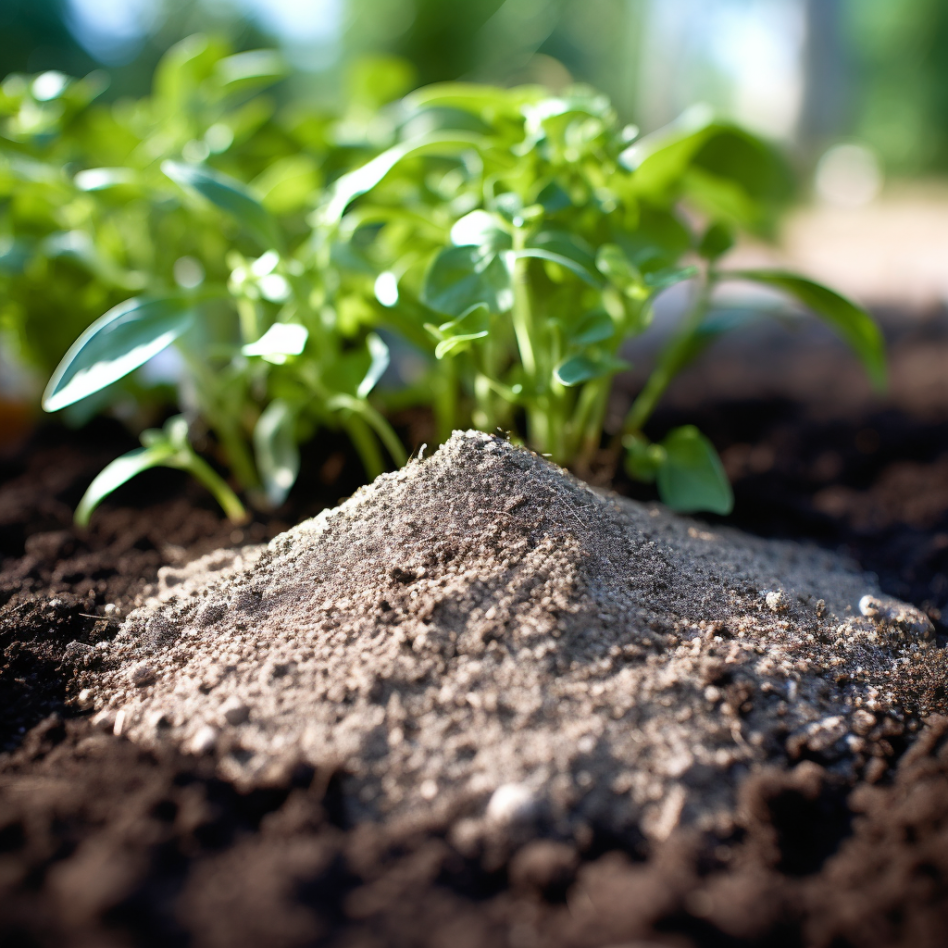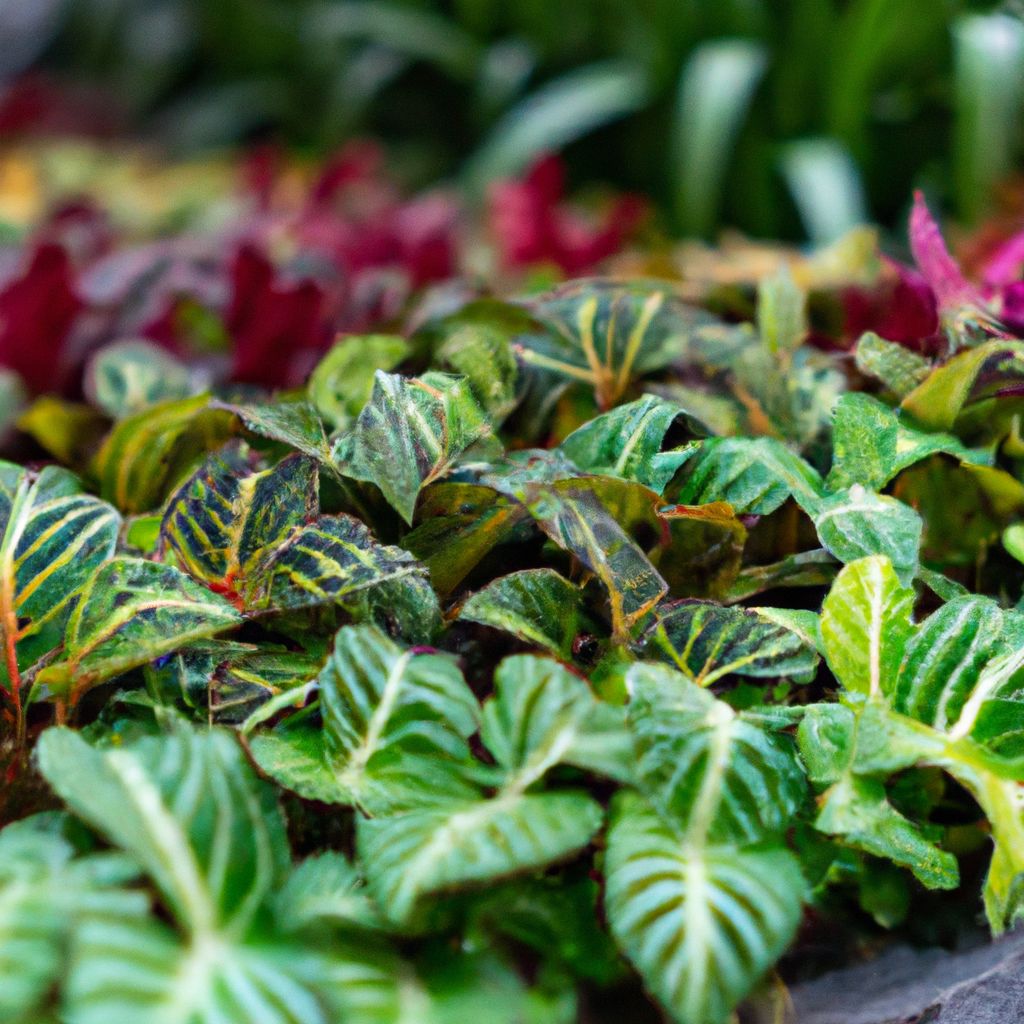Derived from crushed animal bones, bone meal fertilizer is a valuable organic nutrient source that can greatly enhance garden plant health and productivity. Let’s explore the benefits of using bone meal and how to properly apply it for optimal results.
Why Use Bone Meal Fertilizer?
Bone meal fertilizer offers multiple advantages that make it a great choice for nurturing your garden:
- It provides essential nutrients like phosphorus, calcium, and nitrogen to promote robust plant growth. The phosphorus in particular aids root development and flowering.
- Bone meal fertilizer releases nutrients slowly over an extended period. This provides long-term, steady plant nourishment. You don’t have to keep reapplying it as frequently as some other fertilizers.
- It’s organic, natural, and environmentally sustainable. Bone meal repurposes waste animal bones as an effective fertilizer instead of sending them to landfills. This makes it a green gardening solution.
- It’s suitable for a wide variety of garden plants, from flowers to fruits and vegetables. The broad spectrum nutrients in bone meal benefit all aspects of plant growth.
If you want an organic fertilizer that gradually feeds your plants the nutrients they need for healthy growth and abundance, bone meal is an excellent choice worth considering.
Key Benefits of Using Bone Meal Fertilizer
By providing essential macronutrients and trace minerals, bone meal fertilizer delivers significant benefits for plants. Specific advantages include:
- Stronger root systems and better nutrient absorption: The high phosphorus content in bone meal stimulates the growth and branching of plant roots. Robust roots allow plants to better access water and nutrients from the soil.
- Enhanced flowering and fruit production: Phosphorus plays a key role in root, flower, and fruit development. The boost from bone meal leads to more abundant blooms and greater yields.
- Increased resistance to diseases and pests: Proper nutrition strengthens plants’ natural defenses. Bone meal provides nutrients that help ward off fungal diseases, insects, and other garden pests.
- Improved development of bulbs and tubers: Bone meal aids in the enlargement of edible underground storage organs like bulbs, corms, rhizomes, and tubers for better growth and yields.
- Higher yields for crops and fruits: The combination of phosphorus, calcium, and nitrogen provides balanced nutrition to produce more bountiful harvests.
- Long-lasting, slow-release nutrition: Unlike quick-release fertilizers, bone meal breaks down slowly over a long period to provide a steady nutrient supply for continuous feeding.
Give your garden a nutritional boost with bone meal fertilizer this season and watch your plants thrive like never before.

When and How to Apply Bone Meal Fertilizer
Getting the most out of bone meal fertilizer depends on proper application. Follow these steps for best results:
Before Application
- Conduct a soil test to determine current nutrient levels and pH. This will indicate if bone meal application is needed.
- Research your plants’ needs to decide if bone meal is suitable. Some plants prefer less phosphorus-rich fertilizers.
- Buy high-quality bone meal. Seek organic sources to avoid chemical contaminants. Analyze the NPK percentages to ensure a good nutrient balance.
Application Process
- Prepare soil by loosening the top layer and clearing out weeds/debris which can impede nutrient absorption.
- Check package instructions for the correct bone meal application rate per square footage of garden space. Using too much can cause nutrient imbalances.
- Spread bone meal evenly over the soil surface, taking care to avoid direct contact with plant roots which can burn them.
- Mix into top 2-4 inches of soil using a rake or your hands to incorporate the bone meal granules into the root zone.
- Water thoroughly after application to activate the fertilizer. The water enables the bone meal to start releasing nutrients into the soil.
Ongoing Care
- Reapply as needed based on the growth patterns of your plants. Since bone meal is slow-release, you likely won’t need to fertilize more than a couple of times per growing season.
- Adjust amounts as required. For example, hungry tomato plants may need more bone meal than greens.
- Store any unused bone meal properly in a cool, dry place to maintain its potency. Moisture can lead to clumping and nutrient loss.
Follow these tips for success with bone meal in your garden. Patience is key – the slow-release nature means visible results will take some time as the nutrients gradually become plant-available.
Choosing the Right Bone Meal Fertilizer
When shopping for bone meal fertilizer, here are some key factors to consider:
- Sustainable sourcing – Look for bone meal from organic farms or sustainable manufacturers who don’t use chemical treatments. This avoids contaminants.
- Nutrient content – Check the NPK percentages, which indicate the levels of nitrogen, phosphorus and potassium. A typical bone meal NPK ratio is 3-15-0.
- Purity – Select pure bone meal without any fillers, synthetics or “mystery ingredients”. This ensures quality.
- Form – Bone meal comes in powder, granular and pelletized forms. Choose which is easiest for you to apply.
- Plant compatibility – Be mindful of your garden’s needs. For example, bulbs and blossoming plants benefit from extra phosphorus while leafy greens may not need as much.
- Value for money – Make sure you’re getting quality bone meal fertilizer for a fair price. Check reviews and reputable brands.
| Bone Meal Selection Checklist | |-|-|
| 


| 


Taking the time to find high quality bone meal fertilizer suited to your needs will give you returns through healthier, more productive plants.
Avoiding Mistakes When Using Bone Meal
While bone meal fertilizer offers many perks, it’s important to avoid some common mistakes:
- Overapplication – Using too much bone meal can lead to nutrient imbalances. Follow package directions to avoid issues.
- Applying too frequently – The nutrients in bone meal are released slowly over months. Resist the urge to over-fertilize.
- Direct contact on leaves – Bone meal sprinkled directly on leaves or stems can burn the plant. Always mix it into the soil.
- Disregarding pH effects – Bone meal makes soil more alkaline over time. Monitor and amend pH regularly.
- Allowing degradation during storage – Keep bone meal completely dry to prevent compositional changes and nutrient loss.
- Using low quality bone meal – Poor processing or diluting fillers reduces bone meal’s effectiveness. Purchase from reputable suppliers.
- Assuming one product suits all – Not all plants have the same nutritional needs. Tailor bone meal use accordingly.
| 
| Too frequent applications | | Contact with leaves | | Ignoring pH changes |
| Improper storage | | Low quality bone meal | | One fertilizer for all plants |
Be mindful to avoid these pitfalls and you’ll reap the full benefits bone meal fertilization has to offer!
Tips for Using Bone Meal Fertilizer Effectively
Here are some tips and tricks for making the most of bone meal in your garden:
- Always prepare soil before applying bone meal fertilizer. Loosen the top layer and clear out weeds.
- Follow package instructions carefully for proper dosage. More is not better with fertilizers.
- Thoroughly mix bone meal into soil around plants’ roots for even distribution and absorption.
- After applying, water plants well to activate the nutrients and aid breakdown of the bone meal.
- For container gardens, blend a small amount of bone meal into potting mix prior to planting.
- Monitor how plants respond to bone meal over time. Increase or reduce amounts as needed.
- Pair bone meal with compost or manure to provide a broader spectrum of organic matter and nutrients.
- Reapply bone meal every 2-3 months during the active growing season for a steady nutrient supply.
- Store unused bone meal properly in a sealed container in a cool, dry location away from pests.
- Till bone meal into garden beds in fall to prepare for the next spring growing season.
With a bit of trial and error, you’ll discover the ideal bone meal fertilizing routine for your unique garden needs.
What Exactly Are the Nutrients in Bone Meal?
The primary nutrients in bone meal fertilizer include:
Phosphorus – Usually the most abundant nutrient in bone meal (often 10-20% of composition). Phosphorus aids several key plant functions:
- Root growth and development
- Flower and fruit production
- Energy transfer within the plant
- Seed formation
- General vigor and health
Calcium – Typically 1-5% of bone meal content. Calcium is crucial for:
- Proper cell wall and membrane structure
- Stress resistance and tolerance
- Enzyme activation
- Soil alkalinity and pH balance
- Preventing blossom end rot
Nitrogen – Found in smaller amounts around 1-4% in bone meal. Nitrogen drives:
- Leaf, stem, and shoot system growth
- Chlorophyll production and green coloration
- Protein formation
- Overall plant metabolism and development
In addition to these macronutrients, bone meal also supplies micronutrients such as sulfur, iron, manganese, zinc, copper and boron. These play various roles in plant enzyme systems, processes, and structural components.
The broad spectrum of macro and micronutrients makes bone meal an excellent all-purpose organic fertilizer.
Determining Application Frequency

Since bone meal is a slow-release fertilizer, nutrients become available over an extended period of time. This makes determining application frequency important.
Here are some tips for deciding how often to apply bone meal:
- Start with a soil test – Testing your garden’s soil before planting or at the start of each season determines current nutrient levels and whether bone meal application is needed.
- Know your plants’ needs – Researching specific crops’ ideal nutrient requirements provides guidance on what fertilization may be required.
- Observe plant growth – Ongoing observation of your plants’ performance helps indicate if additional bone meal fertilization is beneficial. Signs of deficiencies or stalled growth may signify a need.
- Account for crop cycles – Fast-growing annual vegetables and herbs often require more frequent fertilization than perennials.
- Apply at planting – Incorporating bone meal into beds at planting time gives young roots an early nutritional boost.
- Supplement as needed – During the active growing season, side dress established plants with additional light bone meal applications as warranted based on growth and observations.
As a general rule of thumb, applying bone meal 1-2 times per year is sufficient for most gardens. But let the needs of your soil and plants guide you.
Is it Possible to Overapply Bone Meal?
Yes, it is possible to overapply bone meal fertilizer. Applying too much bone meal can lead to an unhealthy excess of nutrients, primarily phosphorus.
Potential issues from bone meal overapplication include:
- Nutrient imbalances – Excess phosphorus can hamper the uptake of important nutrients like iron, zinc and potassium. This can create deficiencies.
- Soil alkalinity – As bone meal breaks down, it raises pH. Too much can make soil overly alkaline and incompatible with certain plants.
- Growth issues – Plants get nutrient burn from too much bone meal. Leaves yellow, and growth slows or even stops completely.
- Water pollution – Runoff from over-fertilized areas can contaminate groundwater with elevated phosphorus levels. This creates environmental issues.
The key is to follow package directions for correct bone meal application rates. Conducting periodic soil tests helps provide insight into current nutrient levels so you don’t overdo it.
It’s always better to under-apply bone meal than overapply. You can easily supplement with more later based on observed needs.
Best Uses for Bone Meal Fertilizer
While suitable for many plants, some types benefit most from bone meal fertilizer based on their nutritional needs:
Vegetable Plants:
- Tomatoes, peppers, eggplants – Produce more fruit
- Potatoes, carrots, onions – Enhances bulb and tuber development
- Leafy greens – Encourages healthy foliage growth
Fruiting Plants:
- Berries like strawberries and raspberries – Increase yield
- Fruit trees including citrus, pome, and stone fruits – Stimulates flowering and fruiting
Flowers:
- Bulb flowers – Tulips, daffodils, lilies, etc.
- Roses – More profuse blooms
- Dahlias, zinnias, petunias – Vibrant coloring
Herbs and Houseplants:
- Basil, oregano, thyme – Vigorous growth
- Orchids, cacti, succulents – Strong roots
Young seedlings getting established appreciate bone meal for the root growth boost. It also aids transplantation of new plants into your garden.
Work bone meal fertilizer into your planting schedule in any of these areas where phosphorus and calcium are needed for enhanced blossoms, yields, and plant stamina.
Safety Precautions When Using Bone Meal
While an organic fertilizer, bone meal still warrants some safety precautions:
- Use gloves and dust mask – Avoid inhaling bone meal dust or contact with skin and eyes. Wash thoroughly after handling.
- Keep away from pets – Bone meal could cause digestive obstruction if consumed. Keep pets away from treated areas.
- Store properly – Seal container and keep bone meal in a cool, dry place inaccessible to children.
- Avoid water contamination – Prevent bone meal runoff into storm drains, streams, or groundwater.
- Check for allergies – Wear long sleeves and pants when applying to prevent skin irritation in those allergic to bone meal.
- Read instructions – Follow all package directions for safe preparation and usage.
- Dispose of properly – Do not dump excess bone meal fertilizer in natural areas. Check local regulations for correct disposal.
Simple safety steps like wearing gloves and protective clothing, reading packaging instructions, and keeping bone meal properly contained will allow you to safely unlock its nourishing potential in your garden.
Frequently Asked Questions About Bone Meal Fertilizer
What exactly is bone meal fertilizer?
Bone meal is a powdered or granular organic fertilizer made from animal bones, usually cattle. The bones are cleaned, dried, and finely ground to produce the finished fertilizer.
What are the main nutrients in bone meal?
The primary nutrients are phosphorus (10-20%) and calcium (15-25%). It also contains smaller amounts of nitrogen (1-5%). Bone meal provides trace nutrients like zinc, manganese, and iron as well.
How do you apply bone meal fertilizer?
Work bone meal into the top few inches of soil around plants. Use approximately 2-4 tablespoons per square foot. Mix thoroughly to prevent direct contact with roots. Water lightly after application to activate.
How long does bone meal fertilizer last?
Bone meal releases its nutrients slowly over a period of 3-4 months. It provides a long-lasting fertilizer effect without the need for frequent reapplication.
Should you apply bone meal fertilizer to wet soil?
No, only apply to well-drained, moist (not soggy) soil. Wet soil prevents the nutrients from properly absorbing.
How often should you fertilize with bone meal?
Most plants only need bone meal fertilizer once or twice per growing season. Observe your plants and apply again if growth seems stalled.
What plants respond well to bone meal fertilizer?
Tomatoes, peppers, berries, bulbs like tulips and daffodils, roses, fruit trees, and herbs do well with bone meal fertilizer applications.
Is bone meal fertilizer safe for all plants?
Avoid using bone meal on plants very sensitive to phosphorus like proteas, banksias, and grevilleas. Only apply if soil tests indicate a phosphorus deficiency.
Can you use too much bone meal fertilizer?
Yes. Overapplication of bone meal can create nutrient imbalances. Always follow package instructions for correct amounts based on square footage.
Is bone meal fertilizer safe for organic gardening?
Yes, bone meal is OMRI certified for use in organic agriculture. Always check for organic seal on any bone meal fertilizer product.
Final Thoughts on Bone Meal Fertilizer
Bone meal fertilizer provides an organic boost of essential nutrients plants need to thrive. With proper application guided by soil tests, package directions, and observation of your plants’ unique needs, bone meal can be a game-changing addition to your gardening toolbox. Pay close attention to dosage and application frequency, and couple bone meal with other sustainable practices like composting and mulching for vibrant garden results.
















































